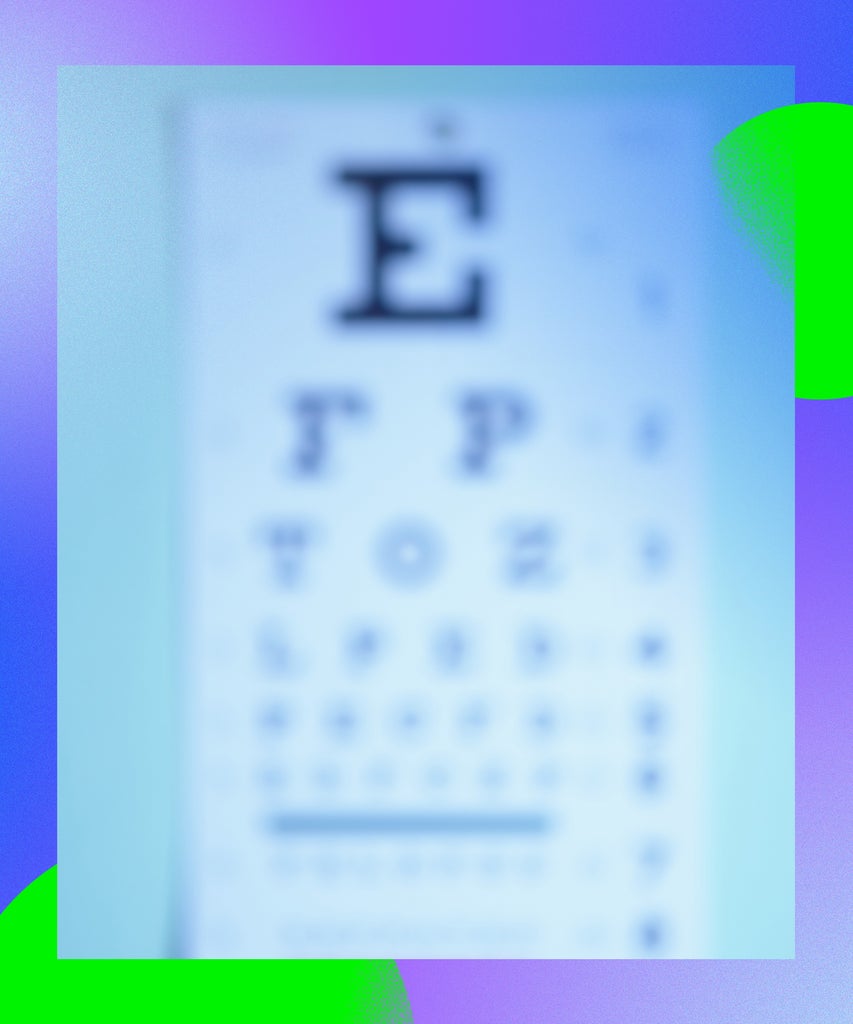
I have always felt undeservedly smug about my vision. For distances, I need glasses, but up close? Crystal clear. One particular point of pride was my ability to work in Google Docs with the screen zoomed out to 75%. Whenever I caught sight of someone working at 150%, I’d chuckle to myself, An inferior physical specimen. And yet! After a year of working from home, spending more time than ever before staring at screens — small screens at that — I’ve had to zoom in. I’m currently working at 125%. Honestly, I probably need 150%.
Maybe this is simply a symptom of aging, but when I mentioned the problem to my coworkers, several of them chimed in to say that the same thing was happening to them, leading me to think the pandemic is to blame. I brought my suspicions to Amy Sheppard, PhD, the deputy head of Aston School of Optometry and a researcher in the field of digital eye strain. “We know that screen time has reached record levels during the COVID-19 pandemic as we spend more time working from home and using digital devices for our social and lifestyle purposes as well. Many millions of people are experiencing digital eye strain (also known as Computer Vision Syndrome), which has a wide range of ocular and visual symptoms,” she said. One such symptom: blurred vision. Headaches, eye strain, dry or itchy eyes, double vision, redness, and wateriness are other red flags, she says.
This wasn’t a huge surprise to me. I’ve been hearing that digital eye strain blurs vision for years. But what I’ve always wondered was whether it permanently damages vision. Will I be coming out of this pandemic needing a stronger eyeglass prescription?
Unlikely, Dr. Sheppard said. “Symptoms of digital eye strain can be frequent and persistent so it could feel as though the eyes are worse and sufferers could be troubled on a daily basis,” she explained. In other words, because I’m on screens for so long every day, the blurry vision may never get a chance to go away, which can make me think I need a stronger prescription — when really I just need a serious break. She also said that if you already wear glasses or contacts, the increased time spent working on a laptop or computer could make a slightly off prescription more noticeable and uncomfortable, spurring you to update it.
The one exception here is with kids. There’s some evidence that children who spend hours in front of a screen can develop near-sightedness, cautioned Dr. Sheppard. “It’s important that screen time is balanced in children with lots of time outdoors,” she said, though admitted that “has been more difficult with lockdowns.”
The long hours we’re spending on our devices is the crux of the problem for everyone, kids and adults alike. Early in the pandemic, Neilsen reported that adults were spending over 13 hours on screens per day, a 60% increase from pre-pandemic. “Not taking breaks to relax the eyes and look into the distance can certainly exacerbate [symptoms],” she said. “If our computers are not well positioned, or we are sitting in a poor position, again, that can increase symptoms; this is likely to be more of a problem at home rather than in offices, which are designed for working. We’re increasingly using smartphones for internet access and the small text size and close working distance can be a particular problem.”
I, for instance, spend my workday on a 13-inch laptop, then often spend at least a couple of hours at night reading or scrolling through TikTok on my phone. That’s a lot of peering at small screens.
“There are several simple things we can do to improve things,” Dr. Sheppard said. First, obviously, take breaks. But like, a lot of breaks. Every 20 minutes, look at something 20 feet away from you, for at least 20 seconds. In my cosy (read: small) apartment, that means getting up to stare out the window for a while.
Dr. Sheppard also recommended taking a hard look at your workstation. “Keep your computer at or slightly below eye level, and position it so that you are not getting glare or reflections on the screen,” she said. “Try to avoid a hunched up, close working position. And make sure you keep up with regular eye examinations.” If you have stubborn or especially annoying symptoms, she recommends seeing an optometrist who can recommend fixes like specialised lenses or eye drops.
And, of course, take a page from me and zoom in. Peering at super-tiny letters will only make symptoms worse.
Like what you see? How about some more R29 goodness, right here?
The Literal Pain Of Working From Home